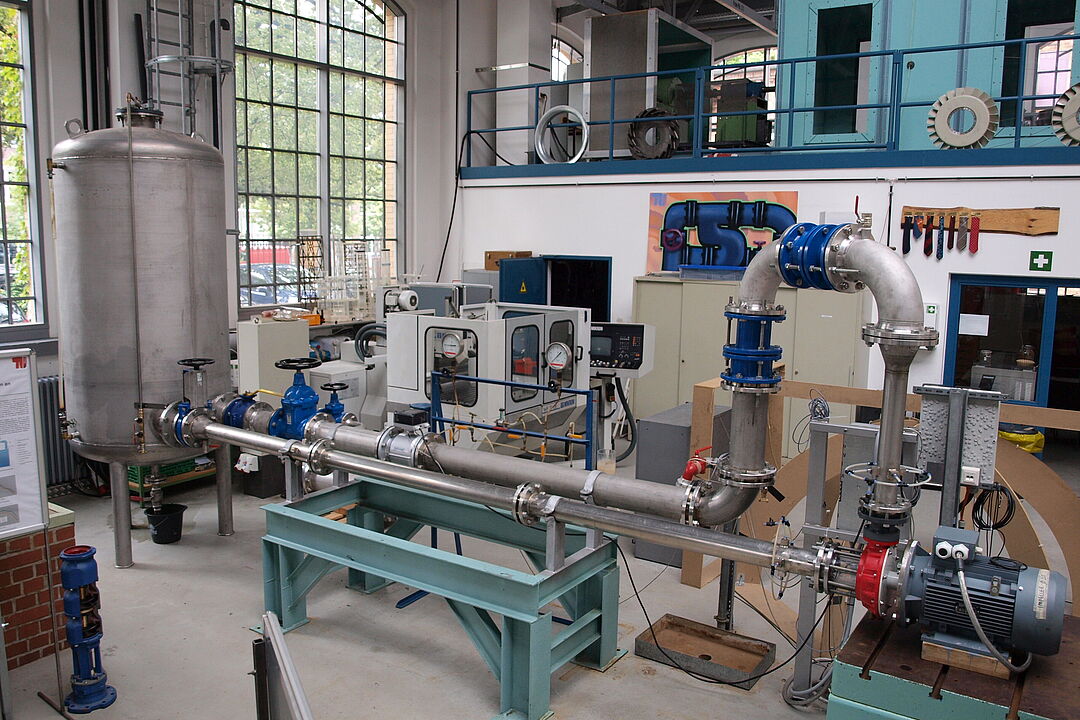Investigation of centrifugal pumps

The Department of Fluid System Dynamics operates test benches in its test hall for the investigation of centrifugal pumps of various designs and sizes. The equipment includes closed circuits for acceptance of centrifugal pumps according to DIN EN ISO 9906, dry installed centrifugal pumps as well as submersible motor pumps. The acceptance tests can be carried out according to all classes of the standard.
In addition, the test benches offer examination possibilities via optical accesses, which enable an examination, for example, of the impeller entry with cameras or measurements with laser measuring systems such as PIV and LDV. For further optical examinations of different areas of the pumps, such as the impeller side spaces, the department has the experience in conversion and carrying out the examinations. Parallel to the optical investigations, the peripheral pressure distribution in the impeller side area can also be determined.
Further, the phenomenon of cavitation is extensively investigated with different kinds of tests. Cavitation is the formation and subsequent sudden implosion of vapor-filled cavities in a liquid. Cavitation often poses significant challenges to pump operators, as it can result in a variety of negative effects. These include temporary effects such as head and efficiency loss of the pump, vibration, and the noise that accompanies them. In addition, cavitation can also have irreversible effects such as material removal from the impeller and guide vanes or damage to shafts and bearings.
The following research projects regarding the analysis of cavitation are currently being carried out at the Department of Fluid System Dynamics:
- Investigation of the cavitation behavior of freshwater pumps regarding the cavitation criteria head drop (NSPH3%), onset of cavitation bubble formation (NPSHIC), as well as induced cavitation sound.
- Investigation of the cavitation behavior of wastewater pumps regarding the cavitation criteria head drop (NSPH3%) and onset of cavitation bubble formation (NPSHIC).
Contact
| Office | FSD |
|---|---|
| Building | K |
| Office | FSD |
|---|---|
| Building | K |
